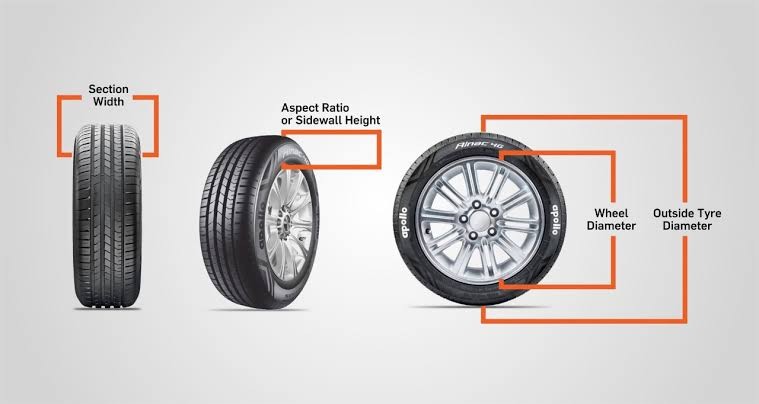Ever watched a supercar glide by and noticed those massive rear tires? At over $300 per tire for performance vehicles, that's not just for show. In 2023, more than 40% of high-performance vehicles came with staggered tire setups, wider tires in the back compared to the front.
This engineering choice represents the perfect marriage of physics and function.
The Physics Behind Tire Width
Let me debunk a misconception right away. Despite what you learned in high-school physics, wider tires DO provide better grip. How?
A wider tire creates a larger "contact patch" the area where rubber meets road. While basic friction laws suggest area doesn't matter, tires aren't simple blocks sliding on flat surfaces. They're complex compounds that deform and grip imperfect road surfaces. A wider tire distributes weight more evenly across more surface area, allowing the rubber to maintain better contact with the road's inconsistent texture.
Think of it like this: a narrow tire concentrates all your car's weight into a smaller area, potentially overwhelming that section of rubber. A wider tire spreads the load, giving you more rubber working to grip the road at any moment.
The Engineering Logic
So why aren't all four tires simply made as wide as possible? Several practical reasons:
1. Drivetrain Needs
Rear-wheel drive vehicles put incredible stress on rear tires during acceleration. Those horses under the hood translate to torque that must transfer through the rear rubber to the road. Wider rear tires handle this power delivery more effectively.
"The most common staggered fitment is with wider tires on the rear axle and narrower ones on the front axle. Wider tires typically go on the rear for performance cars to improve traction during acceleration," explains Discount Tire's engineering team.
2. Weight Distribution
Most vehicles carry more weight in the rear when loaded with passengers and cargo. This additional weight requires more support from the tires. Wider tires in back help manage this variable weight distribution more effectively.
3. Steering Response
Excessively wide front tires can make steering feel heavy and sluggish. There's a careful balance between front-end grip and steering feel. Narrower front tires reduce rolling resistance during turning, making the vehicle more responsive to driver input.
4. Handling Characteristics
A staggered setup promotes slight understeer, a handling characteristic where the front tires lose grip before the rears. This makes the car more predictable and safer for most drivers. If rear tires lose grip first (oversteer), the car can spin a much more dangerous situation for inexperienced drivers.
Types of Vehicles With Staggered Setups
Not every vehicle benefits from different width tires. The most common applications include:
- Performance cars: Corvettes, Mustangs, BMWs, and other rear-wheel drive performance vehicles
- Sports sedans: Mercedes-AMG, BMW M series, and similar performance-oriented luxury vehicles
- Supercars: Virtually all mid-engine and rear-engine supercars use staggered setups
Front-wheel drive cars rarely benefit from staggered setups since their power delivery is through the front wheels. All-wheel drive vehicles may use staggered setups, but with less dramatic differences between front and rear widths.
The Maintenance Consideration
There's one significant downside to different width tires: rotation limitations. Traditional tire rotation patterns become impossible with staggered setups. Tires can only be rotated side-to-side, not front-to-back.
"With staggered fitment, tire warranty is often reduced by 50% since proper rotation patterns can't be followed," notes a Bimmerpost forum expert.
This means more frequent tire replacements, as wear can't be evenly distributed across all four corners of the vehicle.
When Is All The Same Better?
Not every car benefits from staggered setups. Vehicles designed for balanced handling in all conditions particularly track-focused cars, often use identical tires at all four corners, called a "square" setup. This provides more predictable handling characteristics at the limit and allows proper tire rotation for maximum longevity.
Winter driving is another scenario where identical tires might be preferable. The predictable handling of identically-sized tires can be safer in slippery conditions.
The Bottom Line
The next time you see a performance vehicle with those beefy rear tires, know it's not just for looks. It's a carefully engineered decision balancing power delivery, handling characteristics, and weight distribution. Different width tires represent automotive engineers' ongoing quest to extract maximum performance while maintaining safety and predictability.
Whether your vehicle has staggered tires or identical ones at all four corners, understanding the engineering behind these choices helps you make better decisions about maintenance, replacement, and even your next vehicle purchase.

Comments (0)
Please login to join the discussion
Be the first to comment on this article!
Share your thoughts and start the discussion